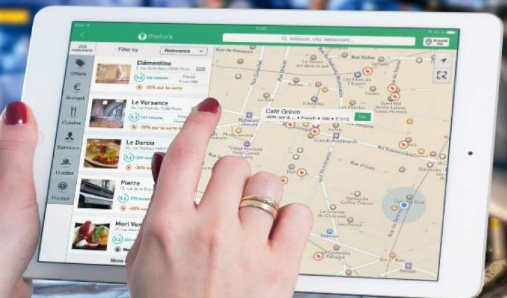Under the new policy, geospatial data from government agencies will be made available to public, private companies.
Under the new policy, geospatial data from government agencies such as the Survey of India and the Indian Space Research Organization will also be made available to public and private companies.
“Our government has taken a decision that will provide a huge impetus to Digital India. Liberalizing policies governing the acquisition and production of geospatial data is a massive step in our vision for an Aatmanirbhar Bharat,” or Self-Reliant India, Prime Minister Narendra Modi wrote in a tweet.
He added in another tweet: “The reforms will unlock tremendous opportunities for our country’s start-ups, private sector, public sector and research institutions to drive innovations and build scalable solutions. This will also generate employment and accelerate economic growth.”
The new guidelines will allow increase the scale, speed, and accuracy of mapping. Indian entities will require no prior approvals, security clearances, licenses for acquisition and production of geospatial data and geospatial data services, including maps.
“Geospatial data is vital for all manners of planning and development work. There are three major objectives of the new guidelines—first, ease of collecting, using and sharing geospatial data. Second, deregulating the sector and allowing private entities to survey and map all physically accessible areas without prior approvals. Third, sharing the geospatial data collected by government agencies with the public and the industries,” said Prof. Ashutosh Sharma, secretary of department of science and technology.
The government estimates that the new guidelines will boost the geospatial data sector to a value of ₹1 lakh crore by 2030, create jobs for 2.2 million people, and have a multifold impact on the economy.
“This will be beneficial for all allied sectors that need geospatial data such as logistics and transportation, road safety, e-commerce. It will also aid government programmed such as MNREGA where people will now be able to see the implementation of various projects and their progress. It will have huge economic impact. Just an example would be the logistics industry, where the country spends around 13% of GDP. This can be brought down to 9% using geospatial data and other technology,” said Rohan Varma, CEO and executive director of Map my India, a technology company that builds digital map data, and offers telematics services and location-based software as a service and geographic information systems using artificial intelligence.
The new policy restricts the terrestrial mapping and surveying to only Indian entities—both public and private. The data generated also needs to be owned and stored in India, with foreign entities being allowed to license it. High resolution data—finer than 1m horizontally and 3m vertically—will still remain restricted.
“This will also level the playing field for Indian companies. Just as an example, while Google Earth could provide satellite images on the map we weren’t allowed to do so even though we had the technology. It will promote projects like the 4D map that we are working on—a 3D map with real time updated data that can be used by applications such as autonomous vehicles,” said Varma.
Ajey Lele, senior fellow working with space security and strategic technologies at the Institute for Defence Studies and Analyses, said that this will allow companies to use Indian data instead of paying for expensive data from other satellites.
“We have very good remote sensing satellites as well as earth observation satellites, but so far the data was not freely available to private players. This resulted in many applications using data from foreign satellites and paying a lot for it. This policy will allow data generated by Isro to be used and it will be more cost effective,” he said.




